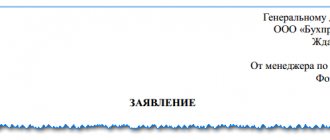What it is
A wire transfer is a payment that is made without the use of cash.
Payment can be made in several ways. By using non-cash payments, organizations can simplify their activities.
Non-cash can be used to pay for goods or services by both companies and ordinary people. The method can be used as a full or partial alternative to cash. The payment procedure in this way is much faster and easier, allowing organizations to accelerate cash turnover.
Cash
Any payer can deposit funds to pay a bill in cash, as this is the easiest way. The buyer needs to come to the main office of the company or the store where the order was made. Here an invoice is provided, and the amount written in it is also transferred.
The disadvantage of this option is precisely the need to personally visit a certain service point. For example, if a buyer lives in Belarus or Kazakhstan, and made a purchase in a Russian store, he is unlikely to fly to another state to pay for it. In this case, it is optimal to study methods of non-cash payment, that is, transfer of payment.
What forms are there?
There are the following forms of non-cash payment:
money orders- checks
- electronic money
- collection orders
- plastic cards
- letters of credit
Individuals often use cards to pay and receive cash. Legal entities often opt for payment orders.
Adjusting calculations
Bank transfer is regulated by the Civil Code, as well as several provisions that were adopted by the Central Bank. Payment without the use of cash must strictly comply with all requirements specified in regulations.
By studying the regulations on the rules for making money transfers, you can find out how to use this payment method and what are the requirements for payment documents.
Watch the video about cashless payments:
Types of non-cash payments
Initially, non-cash payments were made in the form of bills or checks. Today they apply
- payment orders and order requirements,
- checks, letters of credit,
- collection orders,
- electronic payments.
A detailed list of settlements (payments) is indicated in the corresponding document of the Bank of Russia dated June 19, 2012. Regulation No. 383-P “On the rules for transferring funds” specifies all types of non-cash payments, except the last one (electronic), however, the Federal Law of June 27, 2011 No. 161 as amended on July 23, 2013 - “On National payment system." According to this document, electronic payments (using electronic money) have also become a form of non-cash payments.
Using payment orders
When you use this payment method, an account is created at the bank. As necessary, a paper called a payment order is created. It specifies to whom and how much the bank should transfer. As a result, the banking institution, after receiving the order, performs the necessary actions by making the transfer.
This method is used for settlements with suppliers or contractors, payment of taxes and wages to employees. The bank accepts the order only if the required amount is available in the account.
Non-cash payments are payments... Definition of the concept, features, registration procedure
- September 12, 2019
- Finance
- Lazareva Valeria
Business representatives, as well as ordinary citizens, often need to exchange money.
For this purpose, you can use cash or use alternative options. Non-cash payments are payments that are becoming popular in modern realities.
They are used by organizations and ordinary citizens.
Definition of the concept
Non-cash payments are payments that are made without the use of cash. In this case, their essence is to transfer a certain amount from one account to another. Banking organizations in which accounts are opened act as intermediaries.
Non-cash payments are payments that speed up the processes of exchanging funds and also reduce the number of cash bills in circulation. They are often used to conduct business, as it speeds up many processes.
Peculiarities
In some cases, cashless payments are a necessity. For example, in accordance with the law, all transfers of funds related to business activities must be carried out in this way.
It is worth noting that cash may be used for these calculations. However, the transaction amount should not exceed sixty thousand rubles. At the same time, non-cash payments can be used regardless of the transaction amount, since no limits are set for them.
Non-cash payments are payments for which requirements for execution deadlines are established. They are:
- two days for transfers within the territory of any subject;
- five days for transfers within the territory of the Russian Federation.
Forms of non-cash payments
What options are there for those planning to stop using cash?
- Money orders.
- Letter of Credit.
- Checks.
- Collection.
Money orders
In this case, you will need to draw up a document that will contain an order for the bank to transfer funds from the sender’s account using the specified details.
The transfer must be carried out within the time limits specified in the order. This is one of the simplest methods of non-cash payments.
The order is valid for ten days with the exception of the day it is issued.
It is worth noting that non-cash transfer using an order is available to absolutely all citizens. Even for those who do not have a bank account.
This method, despite its simplicity, has a significant drawback. If the sender accidentally makes a mistake while filling out, this may result in a delay or transfer of funds to another recipient.
Letter of Credit
Essentially, this is a special account that is used in cases where the bank’s participation in a transaction is required.
Simply put, a letter of credit is an order from the sender to transfer funds if the recipient fulfills certain conditions. For example, subject to delivery of goods, transfer of any documents, etc.
To explain it quite simply, the buyer needs to open a bank account and then transfer the purchase price there. However, the seller will not receive the funds immediately, but upon fulfillment of pre-agreed conditions. For example, after submitting accompanying documents confirming the delivery of goods to the bank. After this, the intermediary bank transfers funds.
A letter of credit is convenient because it allows the buyer to protect his own funds by transferring money by bank transfer. However, there is also a drawback that is associated with the high cost of this method. In addition, you will have to open a separate account for the letter of credit.
Checks
Checks are securities that contain an order to the bank to make a payment for a specified amount in favor of the person in possession of the issued check.
The drawer of the check can be a person who has a bank account in which funds are stored. After issuing a check, he does not have the right to withdraw the security until the expiration of the specified period or receipt of payment.
Checks can be cash or settlement. The first ones are used to issue cash to the owner of a check. For example, for salaries, travel expenses, etc.
Payment checks are used for non-cash transfers of funds. It contains the order of the drawer to transfer a certain amount from his bank account according to the recipient’s details.
Collection
This method of non-cash payments has some features. They are carried out only if the recipient of funds has special rights to transfer them from the sender’s account. Such rights may arise on the basis of a previously concluded agreement between the parties or on the basis of current legislation.
In fact, this method is demanding in nature. To receive funds, you need to contact the bank and present the relevant documents confirming the right to claim a certain amount.
Another feature of collection is that it is not of a notification nature. That is, the sender is not warned about the debiting of funds. As a rule, he finds out about this after the write-off. For example, if there is a lack of funds to make any expenditure.
Advantages
Non-cash is a method of making transfers that has some advantages.
- The ability to conduct transactions with additional payments, which increases the flexibility of this method of mutual settlements.
- Availability of supporting bank documents that allow, if necessary, to prove the transfer.
- The possibility of using counterfeit banknotes is excluded.
- Costs associated with storing and transporting cash are reduced.
- The ability to store funds in an account opened with a credit institution for an unlimited period.
- Absence of a cash register and, accordingly, a reduction in the cost of servicing it.
It is worth noting that all cash that reaches the cash desk must be transferred to the bank within three days. This is why avoiding the use of cash can significantly reduce the cost of servicing these activities. Now you know not only what non-cash is, but also what advantages this payment method has.
Flaws
Unfortunately, any method of making payments is not ideal. You already know what non-cash is. Now let's talk about the disadvantages it has.
- The likelihood of encountering technical problems at the bank, which may lead to delays in the receipt of funds or the inability to withdraw cash.
- Increased costs due to various bank commissions that are provided by the organization for making non-cash payments.
- It is necessary to organize a constant flow of funds to pay for bank services, pay salaries, make purchases, etc. This may not be very convenient for beginning entrepreneurs who do not have a large amount of working capital.
- You need to constantly interact with the bank to monitor the status of your own account. This also comes with some financial costs for customers.
However, if we consider in general what non-cash payment is, it turns out that this method has more significant advantages than disadvantages.
Registration procedure
To make non-cash payments in most ways, an individual needs to open a bank account. However, some transfers can be made without opening an account. This method will be discussed below.
To open an account, an individual must enter into an agreement with a banking institution. On its basis, an account will be opened that allows for settlements not involved in business activities.
So, one individual has the right to grant another the right to dispose of his funds. The basis for this may be a power of attorney, which is certified by the bank. The account owner can terminate the power of attorney. For this purpose, you need to submit a corresponding application to the bank.
Funds can be written off from the owner’s account either with or without his order. The second option is possible within the framework of current legislation. For example, by a court decision they can collect alimony by debiting it from a bank account without notifying the owner of this operation.
Even if there are no funds in the account at the time of debiting, this may not be an obstacle to fulfilling legal requirements. In this case, the debtor will have a negative balance in the account, and making any expense transactions will simply become impossible due to the lack of funds.
Transfers without opening an account
So, it was said above that some non-cash payments can be made without opening an account. For this purpose, money transfer systems are used.
However, even before transferring funds, you need to make sure that the recipient will have access to the service points of the system chosen by the sender. Otherwise, he will not be able to receive the transfer within a short period of time.
Often, banks with which payment systems have appropriate agreements become service points. It is at credit institutions that recipients can pick up money transfers.
To make a non-cash transfer, the sender must present an identification document, as well as provide information by which the recipient can be identified. These include your full name and address.
After depositing funds, the sender is informed of a certain control code or transfer identifier. This information will need to be passed on to the other party to the transaction in order to receive the transfer.
Non-cash payments without opening an account are carried out within three working days.
So, now you know the main ways to make bank transfer payments. They play an important role in the economy, accelerating the turnover of funds and reducing the costs of transferring and storing cash.
In addition, when using non-cash payment methods, the possibility of using counterfeit banknotes is eliminated. This, in turn, makes transactions safer for their participants.
The presence of undeniable advantages has allowed non-cash payments to gain particular popularity among both legal entities and individuals.
Source: https://fin-az.ru/458841a-beznalichnyie-raschetyi—eto-raschetyi-opredelenie-ponyatiya-osobennosti-poryadok-oformleniya
By letter of credit
The letter of credit method is often used when paying for the supply of goods and similar services. It represents the creation of a letter of credit by the party who will pay for the goods or services. The letter of credit itself is an order that the bank must carry out after the payer confirms that the other party has fulfilled its obligations to it, or the seller provides the necessary accounting papers.
It is worth noting that a letter of credit is created in advance as confirmation that the payer is able to pay for the service or product provided. The method is very popular because it is highly secure. Without receiving the necessary reports, the bank will not transfer money.
Letters of credit as a form of non-cash payments
2. Letters of credit. A special account in transactions with which the bank provides intermediary services. A letter of credit represents a bank's obligation to pay, at the request of a client (applicant), to a third party upon provision of the beneficiary (payee) with documents stipulated by the terms of the letter of credit. Thus, when providing letter of credit services, the bank acts as a guarantor of mutual settlements for transactions between suppliers and buyers, since when making payments under a letter of credit, the beneficiary will receive funds only if all the terms of the transaction are strictly fulfilled. First, the parties to the transaction agree on the terms of the letter of credit and write them down in the agreement. Then the buyer submits an application to his issuing bank to open a letter of credit account and deposits into it the amount necessary to cover the transaction. The application for opening a letter of credit account shall indicate the number of the agreement under which the letter of credit is opened, the name and details of the supplier, the type, validity period, monetary amount of the letter of credit, the method of its implementation, the list of goods/services shipped (provided), the name of the executing bank under the letter of credit and a list of documents that will be used as the basis for payment of funds to the supplier.
When the account is replenished, the issuing bank notifies the seller's (beneficiary) bank, which is called the advising bank. He, in turn, notifies his client (seller) about the opening of a letter of credit. The seller ships the goods and provides supporting documents to his bank. When the documents pass the verification procedure of the issuing bank, the funds are transferred to the seller’s account by the issuing bank or the advising bank (depending on the terms of the agreement).
A letter of credit as a banking service is used not only by companies, but also by individuals (for example, in real estate transactions, purchasing cars or expensive medical services, etc.). Almost all letters of credit are issued and confirmed electronically. A letter of credit as a method of mutual settlements for transactions is suitable primarily for parties who do not know each other or do not want to work on prepayment. In this case, the buyer applies to the bank with an application to open a letter of credit for the amount due to the seller for the service or product. As soon as, for example, the seller provides the bank with documents on the shipment of goods (the list of such documents must be agreed upon in advance), the buyer’s bank makes payment under the letter of credit in accordance with the instructions received. Opening a letter of credit requires the payment of a commission by the buyer (applicant).
A letter of credit is a popular means of payment in international trade, allowing to shorten the cash cycle and increase working capital due to the fact that buyers do not need to withdraw funds from circulation to ensure supplies.
Through collection orders
Collection is a method of debiting funds from the payer's account without his consent. Calculation in this way is carried out in cases where the recipient of the funds has fulfilled his obligations to the other party, but has not received payment. A collection order may be provided for in a contractual agreement. The recipient presents the bank with the necessary papers confirming the fulfillment of obligations. After this, the funds are transferred.
Concept of collection in video:
Cash-non-cash payment
Conventionally, cash/non-cash payment determines settlements through checkbooks, since after debiting funds from the drawer’s account, it may imply issuing them in cash or transferring them to a bank account. This form of payment is more common in Europe and the USA and is carried out only after confirming the identity of the bearer of the check and receiving information about the presence of an amount sufficient for the transfer in the drawer’s account, and, of course, after confirming the authenticity of the check.
Another form of non-cash payment is a transfer through collection or collection order. It is carried out only when the recipient of the funds provides the bank with confirmation of the account owner’s monetary obligations to it. In essence, this is debt collection and it occurs even without timely notification to the account owner. As a rule, the debtor learns about the withdrawal after the transfer has been made.
Using check books
The method is a calculation by issuing a special check. The recipient of the check can subsequently cash the check at the bank, provided that there is sufficient money in the account of the person who issued the check. Both individuals and legal entities can use checks. Payment through this type is widely used in the West.
Money is written off only after checking the authenticity of the check and confirming your identity.
Main forms of non-cash payments in the Russian Federation
Non-cash payments are carried out on the basis of payment documents of the established form in compliance with the appropriate document flow. They vary depending on the type of payment documents, payment method and organization of document flow in the bank. Non-cash payments on the territory of the Russian Federation are carried out in the forms established by the Civil Code of the Russian Federation, which include settlements by payment orders, settlements under a letter of credit, settlements for collection, settlements by checks, as well as in other forms provided for by law, banking rules established in accordance with it and applied in banking practice and business customs (the parties to the agreement have the right to choose any form of payment) (see Figure 1.4).
The forms of non-cash payments provided for transfers of funds at the initiative of payers include settlements by payment orders, letters of credit and checks.
Forms of non-cash payments used to receive payment by debiting funds from the payer’s account at the initiative of the recipient (collector) include collection settlements using payment requests and collection orders.
Payment instruments for non-cash payments include payment cards and bills of exchange .
Figure 1.4 – Forms and tools of non-cash payments
Let us consider the features of using the forms of non-cash payments existing in the Russian Federation in more detail.
1) Payments by payment orders are the most common form of non-cash payments in Russia at present.
A payment order is a settlement document representing the payer’s order to the bank serving him to transfer a certain amount of money to the recipient’s account opened in this or another bank.
The payment order is executed by the bank within the period provided for by law, within 10 days from the date of its issue, or within a shorter period established by the bank account agreement, as well as business customs applied in banking practice.
Payment orders can be made:
— transfers of funds for goods supplied, work performed, services rendered;
— transfers of funds to budgets of all levels and to extra-budgetary funds;
— transfer of funds for the purpose of returning/placing credits (loans)/ deposits and paying interest on them;
— transfer of funds for other purposes provided for by law or agreement.
In accordance with the terms of the main agreement, payment orders can be used for advance payment of goods, works, services or for making periodic payments.
Payment orders are accepted by the bank regardless of the availability of funds in the payer's account.
The bank is obliged to inform the payer, upon his request, about the execution of the payment order no later than the next business day after the payer contacts the bank, unless a different period is provided for in the bank account agreement. The procedure for informing the payer is determined by the bank account agreement.
Sequence of operations and document flow using payment orders:
1 - supply of goods (provision of services);
2 - transfer of a payment order to the bank and debiting funds from the buyer’s account;
3 - transfer of funds to the supplier’s bank and crediting of funds to the recipient’s account;
4 - message to the supplier about the transfer of funds to his bank account (see Figure 3).
Figure 1.5 — Payments by payment orders for subsequent payment for goods (services)
2) Letter of credit form of payment.
The essence of the letter of credit form of payment is that the payer instructs the bank servicing him to make, at the expense of funds previously deposited in the account, or under a bank guarantee, payment for inventory items at the location of the recipient of the funds on the terms provided by the payer in the application for opening a letter of credit.
A letter of credit is a conditional monetary obligation accepted by the issuing bank on behalf of the payer to make payments in favor of the recipient of funds upon presentation by the latter of documents that comply with the terms of the letter of credit, or to authorize the executing bank to make such payments.
There are several types of letters of credit:
1) covered (deposited) or uncovered (guaranteed);
2) revocable or irrevocable.
When opening a covered (deposited) letter of credit, the issuing bank transfers, at the expense of the payer’s funds or the loan provided to him, the amount of the letter of credit (coverage) at the disposal of the executing bank for the entire validity period of the letter of credit. (see Figure 1.6)
When opening an uncovered (guaranteed) letter of credit, the issuing bank grants the executing bank the right to write off funds from the correspondent account of the issuing bank maintained by it within the amount of the letter of credit or indicates in the letter of credit another method of reimbursing the executing bank for the amounts paid under the letter of credit in accordance with its terms. When preparing documents for opening a letter of credit, the type of letter of credit must be indicated - revocable or irrevocable. In the absence of such an indication, the document is considered revocable.
A revocable letter of credit can be changed or canceled by the issuing bank without prior agreement with the recipient (if the conditions stipulated by the agreement are not met).
In the event of a change in the conditions or cancellation of a revocable letter of credit, the issuing bank is obliged to send a corresponding notice to the recipient of funds no later than the business day following the day the conditions were changed or the letter of credit was cancelled.
An irrevocable letter of credit cannot be amended or canceled without the consent of the recipient of the funds.
With the letter of credit form of payment, all the basic rules for making payments are fully complied with:
— products are paid for after they are shipped;
- payment is made with the consent of the payer, expressed in this case by the very fact of opening a letter of credit;
— the payer is given the right to refuse payment if violations of the terms of the contract are detected;
— a letter of credit is opened at the expense of the buyer’s funds or a bank loan, if the buyer has the right to receive it.
Figure 1.6 — Letter of credit form of payment with preliminary deposit of funds
The positive side of the letter of credit form of payment is the guarantee of payment. At the same time, this form of payment has a number of disadvantages, which predetermined the limited scope of its application: the buyer’s funds in the amount of the letter of credit are diverted from its economic turnover for the period of validity of the letter of credit; trade turnover slows down, since the supplier cannot ship finished products before being notified of the opening of a letter of credit and incurs additional costs for their storage.
3) Payments by checks.
In check settlements, the account holder (check drawer) gives a written order to the bank that issued the settlement checks to pay a certain amount of money indicated on the check to the recipient of the funds (check holder). Checks are used by both individuals and legal entities, act as a means of payment and can be used for settlements in all cases provided for by the legislation of the Russian Federation .
A check is convenient for payments in the following cases:
- when the payer does not want to make a payment before receiving the goods, and the supplier does not want to transfer the goods before receiving a payment guarantee;
- when the seller is not known in advance.
A settlement check issued by a Russian bank is valid only on the territory of the Russian Federation.
A check also serves as a security . Check forms are strict reporting forms. When purchasing goods or receiving services, the enterprise (through an authorized representative) issues a settlement check and transfers it to the supplier-receiver of funds immediately at the time of the business transaction (see Figure 1.7). In global banking practice, depending on who is indicated as the recipient of the payment, checks are divided into personal, order, and bearer.
The check must be presented for payment to the bank within 10 days, not counting the day of its issue. It should be remembered that when making payments by checks from check books with funds deposited, payment to the supplier is guaranteed, but the funds are diverted from the payer’s business turnover for a fairly long period.
Figure 1.7 - Payments by checks
1 - the buyer sends an application to the bank to issue a checkbook; 2 - the bank issues him a checkbook (or a one-time check); 3 — shipment of goods or provision of services; 3a - payment for goods by check; 4 - the supplier presents the check to the bank for payment and the latter debits the funds from the buyer’s account and credits them to the supplier’s account
4) Payments for collection.
Collection settlements are a banking operation through which the issuing bank, on behalf and at the expense of the client, on the basis of settlement documents, carries out actions to receive payment from the payer. To carry out collection settlements, the issuing bank has the right to involve another executing bank.
Payments for collection are carried out on the basis of a payment request/collection order. They represent an unconditional requirement to debit funds from the payer’s account in favor of the recipient. You can combine these two payment instruments together, since in essence and the procedure for settlements they are identical. This form is similar to settlements by payment orders, but unlike it, it is not the payer, but the recipient of the funds who draws up and submits to the bank a document (demand) to write off a certain amount in his favor.
Such settlements (collection settlements) are carried out on the basis of payment requests, payment of which can be made by order of the payer, with acceptance (from the Latin acceptus - accepted) or without his order (without acceptance), and collection orders, payment of which is made without order payer (indisputably).
Payment requests and collection orders are submitted by the recipient of funds (collector) to the payer's account through the bank serving the recipient of funds (collector) (see Figure 1.8).
Figure 1.8 – Calculations using payment requests
When making payments by payment requests with acceptance, the payer has the right to accept the payment request in whole or in part in writing, or to refuse to accept payment requests on the grounds provided for in the agreement between the payer and the recipient of funds.
The period for accepting payment requests is determined by the parties to the main agreement. In this case, the period for acceptance must be at least 5 working days.
Payments by payment requests without the payer’s acceptance are used in the following cases:
- established by law (currently for payments for products and services of enterprises of the fuel and energy complex, utilities, energy, water supply and sewerage enterprises, communications enterprises);
— provided for in an agreement between the payer and the recipient with the payer granting the servicing bank the right to write off funds from the payer’s account without his order.
Collection orders apply:
- in cases where an indisputable procedure for the collection of funds is established by law, including for the collection of funds by bodies performing control functions;
— for collection under enforcement documents;
- in cases provided for by the parties to the main agreement, subject to the provision of the bank servicing the payer with the right to write off funds from the payer’s account without his order.
5) Payments with plastic cards.
Payments with plastic cards presuppose the presence of a certain system, which includes banks and other participants who jointly issue into circulation and carry out transactions using plastic cards.
The basic rules for the issuance and use of bank cards in the Russian Federation are regulated by the “Regulations on the procedure for issuing bank cards by credit institutions and making settlements for transactions carried out using them.”
The system consists of its owner, the issuing bank , and the acquiring bank. The owner of the system is the person who determines the rules and standards for the participant to conduct various transactions using plastic cards and has certain obligations. Among the banks included in the system, a special place is occupied by the issuing bank, which issues cards, as well as settlement and cash services for holders of these cards. The acquiring bank is a bank that carries out card servicing operations, which is defined as acquiring.
Non-cash payments using plastic cards are made on the basis of an agreement concluded by the bank with the owner of the system according to the standards and rules established by it and are carried out according to the scheme presented in Figure 1.9.
Figure 1.9 Payment scheme using plastic cards
1 — Concluding a card account agreement and opening a card account; 2 — card issuance; 3 - transfer of goods, provision of services to the client who is the card holder; 4 - use of a card with receipt of a PTS card receipt or other documents confirming this operation; 5 - transfer of a card check or other documents to the bank; 6 — acceptance by the bank of documents from the PTS and generation of payment instructions to the issuing bank; 7 - transfer of payment instructions to the issuing bank; 8 - debiting funds from cards - client accounts; 9 — transfer of funds to the acquiring bank; 10 — funds are credited to the PTS account; 11 - PTS notification of payment.
The presented diagram reflects only the general procedure for document flow, while in practice a different procedure for executing the instructions of the acquiring bank is possible, which is determined by the Rules of the bank or the Rules of a specific system.
Payment using bank cards has undoubted advantages for the bank client. The attractiveness of bank cards is determined by their ease of use, a significant level of security for funds stored on a card account in a bank, and the ability to check each transaction by contacting the bank.
6) The bill of exchange form of payment is a settlement between the supplier and the payer for goods or services with deferred payment (commercial loan) on the basis of a special document - a bill of exchange .
A bill of exchange is an unconditional written promissory note of a form strictly established by law, giving its owner (the holder of the bill) the indisputable right, upon maturity, to demand from the debtor payment of the amount indicated in the bill of exchange. The law distinguishes between two main types of bills: simple and transferable [11].
A promissory note (solo bill) is a written document containing a simple and unconditional obligation of the drawer (debtor) to pay a certain amount of money at a certain time and in a certain place to the recipient of funds or his order. A promissory note is issued by the payer himself, and in essence it is his promissory note.
A bill of exchange (draft) is a written document containing an unconditional order from the drawer (creditor) to the payer to pay the amount of money specified in the bill to a third party or to his order. Unlike a simple bill of exchange, not two, but at least three persons are involved in a bill of exchange: the drawer (drawer), issuing the bill; the payer (drawee), to whom the order is made to make payment on the bill; bill holder (remitee) - recipient of payment on a bill. A bill of exchange must be accepted by the payer (drawee), and only after that it acquires the force of an executive document.
The possibility of bills of exchange expands the boundaries of their use, transforms a bill of exchange from a simple instrument for obtaining a commercial loan into a credit instrument of circulation, serving the sale of goods and services. All endorsements on the bill, its acceptance or aval are executed within the established payment period.
Using plastic cards
Plastic cards for payment are issued by banking organizations, after which the card holder can carry out transactions to pay or receive cash. Debit and credit cards are popular among individuals.
Any payment by card is carried out taking into account the conditions stipulated in the agreement between the holder and the bank. The terms and conditions reflect the capabilities of the card (can you pay worldwide, is there a percentage when withdrawing cash, etc.).
Checkbook as a form of non-cash payments
4. Calculations using a checkbook. Funds are debited from the payer's account and issued in cash to the recipient. A checkbook is a convenient alternative to cash, as its use is as wide as banknotes. For example, when banks are closed and ATMs are not working due to loss of connection, you can use a checkbook. This payment instrument is considered a relic of the past, and the use of plastic cards is now popular. But a checkbook has one undeniable advantage: not every store has a terminal through which payments are made using cards, and a checkbook will be used absolutely everywhere.
— check holder is a legal entity in whose favor the check is issued;
— the payer is the bank in which the drawer’s funds are available.
There are two types of checkbooks: settlement and cash. Payment books are intended for issuing checks, which indicate an order to transfer funds from one account to another. And cashiers write checks that allow you to receive funds in cash. Cash-type books are superior in popularity, since the cash collection service is more cost-effective.
Basic principles of calculations
There are a number of principles by which non-cash payments should be structured. Among them are:
full legality- sufficiency of funds
- urgency of payment
- notifying the account holder before debiting funds
- performance of all operations exclusively according to the terms of the contract
All non-cash transactions must be carried out only in accordance with current legal requirements.
In order for operations to be carried out according to plans, there must be enough money in the account. This principle must be adhered to when building a cashless payment system.
Urgency of payment means the execution of transfers within the agreed time frame. The agreement with the bank specifies certain nuances and payment deadlines.
By adhering to the basic principles of cashless payments, the organization will be able to create an effective way to pay and receive funds when interacting with other individuals.
What is non-cash based on?
First of all, all non-cash payments must be carried out in accordance with laws and regulations. In addition to the general rules, each credit institution is obliged to act only within the framework of a valid agreement between the bank and the account owner. Going beyond the scope of the document is allowed only when signing a new agreement. In addition, the bank does not have the right to influence the choice of payment form for the participants in the transaction.
Any invoice issued for payment by bank transfer, a sample of which can be obtained directly from a credit institution, must be supported by a sufficient amount of funds in the payer’s account. In addition, money transfer operations must be carried out within a specified period, otherwise sanctions or fines may be imposed on the culprit. And, of course, every account owner has the right of acceptance, which means that even the state is prohibited from debiting money from the account without prior notification.
Advantages and disadvantages
Organizations and individuals who choose this type of payment are able to obtain the following benefits:
- ease of operation
- small transfer commission or no commission at all
- instant transfer
- simple control over completed operations
Specific benefits depend on the form of payment. For small and large organizations, using this method allows you to save money by reducing maintenance costs.
Among the disadvantages are:
- complexity of organizing a settlement and payment system
- possibility of failures and delays in payment (depending on the specific bank)
- occurrence of risks when making transfers
Non-cash payments are strictly controlled by supervisory authorities, so when switching to non-cash payments, you need to prepare for the creation of detailed reporting.
Non-cash form of payment and its types
The most common form of payment. Non-cash payment is used in all areas: payment for services, purchase of goods, transfers, settlements between individuals and legal entities. The official interpretation of the term is the transfer of funds from the buyer to the seller with the help of a credit institution, by sending money from account to account.
When paying with a bank card, the vast majority of holders do not suspect what complex mathematical processes begin after entering a PIN code or using PayPass technology. This applies to debit and credit cards. Cashless payment is a high-tech process that has several types:
- Payment from bank cards.
- From bank account to bank account or card.
- Use of electronic money.
The described payment methods for goods are used by individuals and legal entities to comply with the requirements of current legislation. This form of payment increases the degree of control on the part of the state over the movement of money within the country and making transfers outside its borders.
Non-cash payments from bank cards
Bank cards are used more often than other methods for non-cash payments. Within one bank, a transfer takes up to several minutes. In large credit institutions, a transfer between cards is completed within a matter of seconds, unless a technical failure occurs.
Transfers between cards of different banks take time: from a few seconds to 3-5 banking days. During the same time periods, the services of another bank are paid - for example, when a loan debt from another bank is paid from a bank card of one credit institution.
Payment from a bank account
Individuals can open current, savings and savings accounts in a bank. For example, a current account is designed for free management of money. Other products may have restrictions on spending transactions.
If a bank card is linked to the account, then an individual can combine payment options: pay from the card to the account, or make a transaction directly from the account. There are several options, and all of them can be implemented through the online banking system.
Using electronic money
Electronic money is one of the types of non-cash payment for goods and services, as well as making transfers. The following online payment systems are most common on the territory of the Russian Federation:
- Yandex money.
- QIWI.
- PayPal.
- WebMoney.
- Payeer.
The use of electronic wallets requires identification in the system. Transactions in which either party remains anonymous are prohibited or subject to mandatory controls. Almost any product or service can be paid for using electronic money. Subsequently, the seller withdraws the money to a bank card or cashes out in another way.
The disadvantage of this type of non-cash payment is the inconvenience when transferring from one online payment system to another. In this case, you will need to link wallets, with the subsequent ability to transfer money with a fairly large commission.
Most common form
Among legal entities, non-cash payments using payment orders are the most popular. Using this method, companies manage to carry out a huge number of operations. By order, settlements are carried out within the organization. Payments are also made for services provided by other companies or individuals. The order sent to the bank contains detailed information about the recipient and the payment deadline.
Plastic cards are the most popular among individuals.
Payment orders as a form of non-cash payments
1. Payment orders . A document is drawn up instructing the bank to carry out an operation to transfer funds from the payer's account to the payee's account.
A payment order is a special form, the form of which and the rules for filling it out are determined by the regulations of the Central Bank, and the civil code regulates non-cash payments executed using the specified document.
Non-cash transfer of funds can be executed by payment orders for the following purposes :
— payment of contributions and taxes to budgets and funds;
— advances and payment of agreements, agreements, contracts;
— settlements for loans and other periodic payments.
It should be noted that the civil code provides for a certain order of payments.
If the amount of funds in the account allows for financial transactions, payments are processed in the order in which orders are received. If there is no money, payment orders are placed in a file cabinet and processed in accordance with the article of the civil code regulating the order of payments. For example, if an organization needs to transfer contributions to the budget fund, funds for salaries, alimony, and pay for office supplies under a sales contract, then according to the card index the order of payments will be as follows:
— transfer of funds for alimony;
— transfer to salary and fund;
- payment for stationery.
Regardless of the amount of money in the account, the bank does not have the right to refuse to accept orders from clients to transfer funds.
The most protected form
To protect the payer from fraud or the provision of poor-quality services, payment using a letter of credit may be used. This method is considered time-consuming, but at the same time quite secure. The bank transfers funds only after receiving confirmation of the fulfillment of the agreed obligations between the payer and the recipient.
It is worth noting that to pay using the letter of credit method, you need to create a separate account, even if you already have a current account with the same bank.
Principles of organization
The presented payment method is one of the important tools for the development of the country's market economy. It is voluntary in nature, allowing you to transfer and receive wages, savings from deposits and other income without visiting financial institutions. Continuity of money transfers is ensured by the principles on which the organization of non-cash payments is based:
- Enterprises and organizations participating in operations themselves choose their form, regardless of the scope of their activities.
- The client's rights to manage funds are not limited.
- Transactions are implemented on a first-come, first-served basis.
- Payments are transferred from account to account if funds are available.
Funds control
In organizations, control over funds is exercised through the use of a ledger of expenses and income. All transactions are recorded. Extracts allow you to keep records. Depending on the form of non-cash payment used, statements of deposits, letters of credit, etc. are used.
Individuals need to use bank statements to control their funds. When using electronic money, certain statistics are maintained by the bank itself or the electronic payment service.
Accounting for account 51
To account for non-cash transactions, legal entities use 51 accounting accounts, which record all movements on the account.
Analytics on account 51 is generated for each account opened by an economic entity.
Any transactions reflected in 51 accounts must be confirmed by primary documents.
To reflect non-cash transactions on special accounts of the organization, account 55 is used.
Analytical accounting according to account 55 is carried out in the context of check books, deposits, letters of credit and other non-cash forms.
Private entrepreneurs, of course, do not use the Accounting Plan, but they reflect non-cash transactions (income/expenses) on bank accounts in the Income/Expense Accounting Book (to calculate the tax base), also confirming the accounted transactions with primary documents.
Ordinary individuals control non-cash funds using bank statements.
Accounting Rules
To use the non-cash payment option, you must keep track of funds in your current account. Accounting rules include:
regular receipt of bank statements- correct compilation of puffiness by accounting department
- separate accounting for all existing current accounts of the company
To reflect information in the form, extracts from banking institutions, cash checks, payment orders, and collections are used.
Morphemic analysis of the word “calculation”
Note that the analyzed word is an inanimate noun of the masculine singular and second declension. First of all, let’s highlight the prefix “ras” (for example, as in “paint”, “crumb”, “stick”). Then we will select related words to highlight the root morpheme. These include: “prudently”, “calculation”, “counting”, “calculated”, etc. Based on this, we will highlight the main part of the word, which contains its main lexical meaning - the root “even”. Using the declination, we find the zero ending (“calculation”, “calculation”, “calculation”, “calculation”).
Thus, “ras” is a prefix, “even” is a root and a zero ending.
Example sentences
Let's give examples of contexts with the word “calculation” to forever remember its spelling:
- Elena Stepanovna had a fight with her boss, so she quit and asked for a payback.
- Today, cashless payments are a popular means of payment.
- The secretary helped me calculate child care benefits.
- Gas tariffs will be calculated differently starting next month.
- The company had the expectation that the employees would win the project.
- My mother warned me that I need to take into account not only my family, but also my friends.
- The calculation of the area of the house turned out to be incorrect, so we had to start over.
- Evgeny prefers to work only in cash.
- His calculation was that it would soon get dark, and in the morning no one would be able to detect the theft.
- The colonel's calculations turned out to be correct: the enemy was defeated, the territories were liberated, and the enemies were captured.
- Dima asked me to help calculate building materials.
Refund
When using cashless payment, a refund is provided under certain circumstances. Refunds by bank transfer are made to a bank account. Individuals can expect a refund if their rights under the PLA are violated. Refunds between two legal entities are carried out in accordance with the standards specified in the Civil Code.
Quite often, a dispute can only be resolved in court, if an agreement has not previously been concluded regulating the return of funds. It is worth noting that it is extremely difficult to return money for goods of proper quality. You can count on a refund if the other party provided a product or service of inadequate quality or not in accordance with the agreements.
Fund accounting principles
Non-cash circulation of funds is carried out by all its participants in accordance with a number of important principles.
Principles of organizing non-cash money turnover:
- Free choice of payment method.
- Compliance with established transaction deadlines.
- All transactions are carried out only on the basis of agreements that are subject to mandatory compliance.
- The owner of the bank account must authorize the transaction to be carried out using his funds.
- The payer has enough money to complete the transaction.
- Strict compliance with generally binding norms of current legislation.
The procedure for making money turnover
The implementation of any non-cash transactions is not possible without a bank account opened on the basis of an appropriate agreement with the servicing financial institution.
An exception is when a payment is made by an ordinary individual whose money transfers are not related to business activities.
An account can be opened by a subject of non-cash transactions in a bank or other financial institution that has permission from the Central Bank of the Russian Federation.
It is allowed to open accounts in rubles (RUB) or foreign currency.
Non-cash transfers can be made by payers from any of the following accounts:
- current accounts (for ordinary individuals whose payments and receipts are not related to entrepreneurship);
- current accounts (opened by any entities, except credit institutions, for commercial receipts/payments);
- budget accounts (opened by legal entities for transactions with budget money);
- correspondent accounts (exclusively for financial institutions);
- deposit accounts (income investments of citizens/organizations);
- special accounts (letter of credit, clearing, agency, collateral, others).
How to issue an invoice correctly
An invoice is a piece of paper issued by a company that provides a product or service.
For individual entrepreneurs and LLCs there is no single sample document and no specific regulations. However, when issuing an invoice, the following information must be included:
- data of the parties
- list and name of goods or services
- unit price
- total amount
- conditions for returning goods
- details of the parties
- payment method
When creating paper, it is advisable to use a proven sample to avoid mistakes.
Plastic cards as a form of non-cash payments
5. Plastic cards. Payment is made using well-known debit or credit cards.
The high popularity of using plastic cards is not accidental. This method of payment for goods or services provided has many advantages. In the modern world, society can no longer imagine life without the use of various electronic payment methods. Development of the information technology system, incl. in e-commerce, is happening at a very fast pace, so if 10-15 years ago, plastic cards as a means of payment only began to appear among the population, then today they are being replaced by NFC (Near Field Communication) and MST (Magnetic Secure) systems. The main point of these systems is the ability to pay for goods or services through your own smartphone by bringing it to the payment terminal. Also, with the help of modern technologies, computers, mobile devices, almost any person or organization can use electronic plastic cards when paying for a purchased product or any service.
In Russia, the plastic card market is developing mainly due to salary projects, the essence of which is the bank’s servicing of the process of calculating and issuing wages to employees of an enterprise using plastic cards. The main requirement for the use of plastic cards in Russia is a combination of two conditions:
— the payment mechanism using a card should be no less convenient than using cash;
— using cards should be minimal in cost and beneficial for the client.
Errors when preparing an invoice for payment
Common mistakes include:
lack of transcripts of signatures- violation of the five-day invoice deadline
- indication of different dates on copies of the seller’s and buyer’s invoices
When paying by bank transfer, the total amount is inclusive of VAT. The invoice for a service or product indicates the exact details of the seller, to whom the required amount of money is transferred after fulfillment of obligations.
Using non-cash allows you to make and receive payments without restrictions in a short time. After studying the regulations, problems with the use and reporting of non-cash payments in the organization will not arise.
Top
Write your question in the form below
Collection payments as a form of non-cash payments
3. Payments for collection . These calculations are carried out when the claimant has legal rights to the debtor’s funds.
From the very beginning, the use of collection was legally a profitable transaction for the buyer, because payment was made upon receipt of documents with his consent, without any liability of the bank for payment or acceptance. As for the seller, the collection form of payment guarantees that the goods will not be at the disposal of the buyer until he makes payment, since until payment is received, the documents remain at the disposal of the collecting bank. If we consider the definition of “collection,” it is given both at the legislative and doctrinal level, where each specialist puts forward his own interpretation. At the legislative level, the definition of collection was expressed in the Unified Rules for Collection and in the Civil Code of the Russian Federation.









